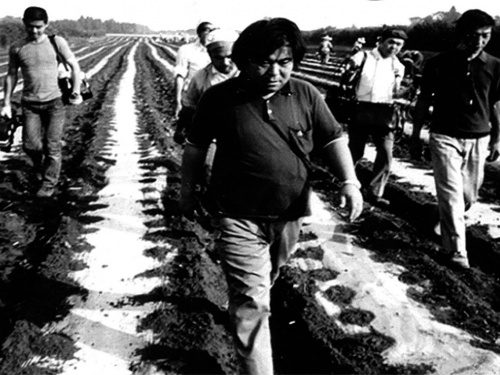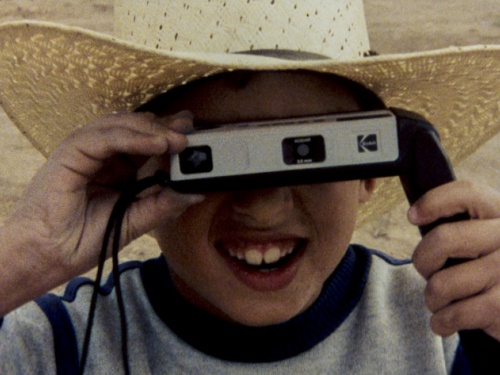The Essay Film as an Activist Gesture
A Q&A with filmmaker Kevin B. Lee
Ahead of his lecture-performance on activism and the video essay at the ICA, Kevin B. Lee speaks to Essay Film Festival 2017 organiser Matthew Barrington about the rise of the essay film and why the format is so relevant today.
Can you tell us what led you to start creating video essays?
I made my first video essays in 2007, as part of a blog project covering a list of the 1000 greatest movies of all time. As I wrote about each title on the list, I began wanting to engage more intimately with the films by working directly with their footage, and creating video essays allowed me to realise this more direct engagement. It also became a way to engage with other members of the online film community. In collaborating with other critics on video essays I’d absorb their ways of looking at films and adapt their insights into an audiovisual form. It was a very enriching process, not unlike a self-designed series of video essay tutorials on film analysis with the best possible thinkers involved.
Why do you think there has been such a rise in the construction of digital video essays over the last few years?
The rise of this form marks an age where it is as easy to communicate with images and sounds as it is with written text. I started making video essays at a time when technological advances in digital and social media combined to afford one the ease to a) access films in digital form; b) edit the footage to create a new work; c) upload the work for others to view. This process has only become easier and more intuitive for subsequent generations through personal mobile technology and ever more sophisticated forms of social media. Now it is as natural to express oneself through images or short videos as it is to write text. The video essay thus becomes an important method to reflect upon and develop this everyday mode of personal expression through the audiovisual.
Now it is as natural to express oneself through images or short videos as it is to write text
What is it about the form of the video essay which makes it a useful tool to provide commentary on our current political situation?
Since the video essay is such a widely embraced form for discussion of popular culture, it affords an opportunity to direct this collective attention to larger social and political issues that inform our culture. I can point to my own development to illustrate this shift of attention. My first video essays were relatively innocent expressions of cinephilia meant to explore my love of films, and this celebratory mode holds true for the vast majority of video essays produced today. At the same time, the video essay is also a tool for self-education. My video essays were auto-didactic creations largely driven by a simple question: what is the most interesting thing I can learn by engaging with a given film? When I started, I was most interested in learning how films function through narrative, cinematography and staging. But as I probed further into these ostensibly apolitical questions, I began to encounter deeper factors informing my interests.
For instance, I once evaluated Oscar-nominated lead performances based on how much time each actor or actress spent on screen to see if there was a correlation between screen time and impact of the performance on the viewer. What I inadvertently discovered was that Oscar-nominated lead actors have twice as much screen time on average than their actress counterparts. This raised larger questions about gender disparity in Hollywood and mainstream film as reflected on screen.
The screen becomes not just a cinematic canvas, but a space to dissect and diagnose the ideological forces working through it
As these social and political concerns continued to surface in my investigations of films, I began to seek more conscientious modes of filmmaking. The British Film Institute 2013 series on essay films provided many such works. Through reflecting on that series, I concluded that the essayistic mode is at its most potent when it expresses discontent with everything that’s conventional, complacent and conformist in contemporary media and society. The screen becomes not just a cinematic canvas, but a space to dissect and diagnose the ideological forces working through it and their subsequent effects on the viewer.
Can you expand on how you see the video essay as an activist gesture?
I think one crucial element of the essayistic mode is how it positions us outside the space of the screen to see how that space operates. In doing so, it redirects our attention back to the material world, to physical spaces, to the forces that govern and shape them, and to our own possibilities to act amidst these forces. We are no longer just eyes glued to a screen; we become minds and bodies reacquainted with our reality.
The essayistic mode is at its most potent when it expresses discontent with everything that’s conventional, complacent and conformist
This rearrangement of our relationship between screens and reality is crucial to realising the potential of the video essay as a mode of activist expression. The rise of video essays proposes a new wave of democratisation of the audiovisual, where everyone can articulate themselves and mobilise others through their self-made media. Key to the realisation of this possibility is developing a collective mindset that can engage this mode in a manner worthy of our best aspirations, both for our screen culture and our social realities.
This article is posted in: Articles, Interviews
Tagged with: Essay Film Festival, Kevin B. Lee, Video Essay, Artist Moving Image, Cinema, activism, Protest






